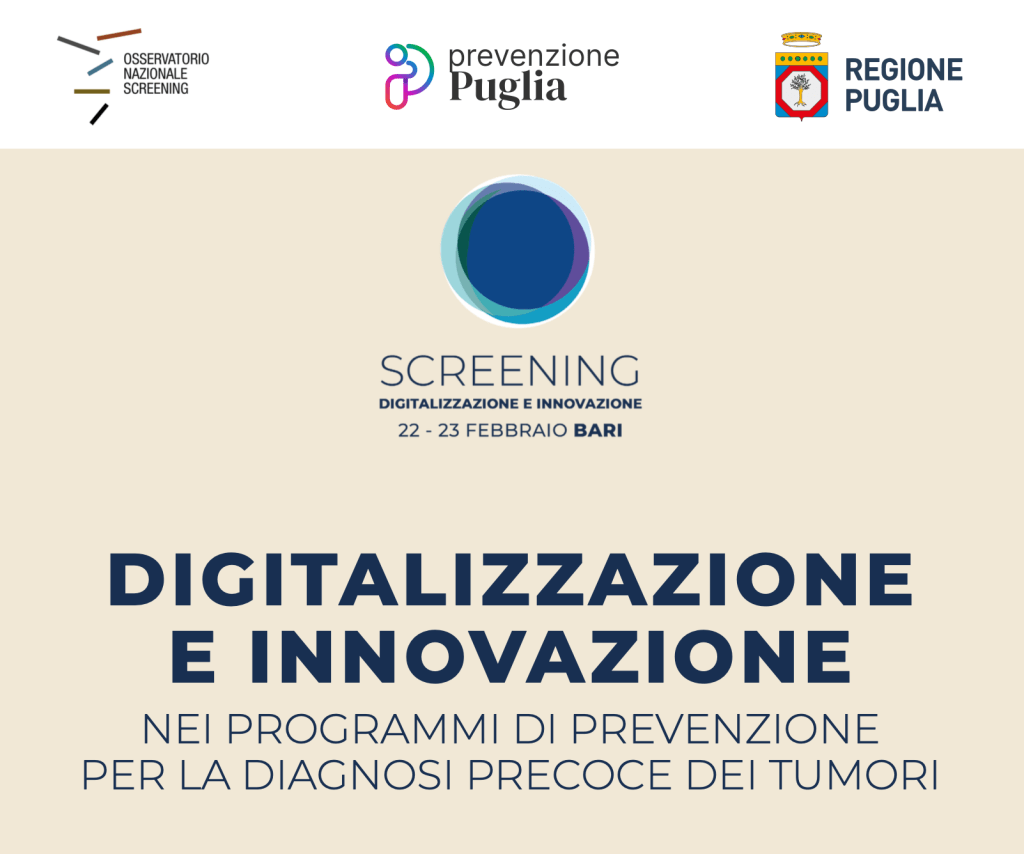A method and a path to make the best use of digital technologies to make cancer prevention more effective, networking with all the actors involved.
Those who follow this blog know how I am sometimes critical of the methods and contents with which the digital transformation of healthcare is being carried out. Today I want to talk to you about an example of how it is possible to set up a method and define a path to understand how to best use digital technologies by networking with all the actors involved.
The inspiration comes from a workshop organized by the Puglia Region and the National Oncology Screening Observatory with the support of the FASO Federation of the three scientific societies that deal with oncology screening on digitalisation and innovation in prevention programs for the early diagnosis of tumors. The workshop saw the involvement of those responsible for cancer prevention from the regions and healthcare companies, scientific societies, the Ministry of Health and some suppliers, with my participation as moderator. A day and a half of discussion, discussions and ideas starting from the assumption that the way of doing prevention, which is closely linked to people’s lifestyles, must necessarily change both in the form and in the ways in which it must be promoted and conducted. Because we are all “digital“, natives and non-natives, it is necessary that the entire prevention cycle is not only “digital” but rethought in depth by making the most of digital technologies, the enabling e-health infrastructures and the various information systems that must interoperate.
A large group of professionals was “contaminated” e “stimulated” from other professionals, generating an osmosis of skills, experiences and ideas on how to improve cancer prevention, overcoming the problems and limitations that exist today. Prevention is a much more complex world than it may appear to those who do not know it in depth. There are many aspects – organizational, technical, regulatory, privacy, IT – which each have their own specificities and which have an impact on the accuracy of the definition of the reference target, on the effectiveness of the user response, on the precision and timeliness of the diagnostic process at different levels.
Starting from the records from which to select people, which often present problems of duplication or inaccurate data, to the criteria with which to exclude those who do not fall within the campaigns (e.g. for having carried out an exam within the expected period), up to the tracking of the diagnostic process, there are many problems on the table. Even when thedata is there” it is not always easy to access or use them, for example for privacy reasons.
The workshop began with the sharing of a national survey (with the sole exception of Valle D’Aosta) which photographed the current state of digitalisation in communication, information systems, monitoring and control of prevention, as well as indicating what the answers and how different regions plan to use digital technologies for the future. Three working groups met, first within themselves, then among themselves, to discuss and analyze what emerged from the survey. On Friday, the next day, there were a series of interventions to deal with some specific topics. Since I cannot list them all, I will limit myself to mentioning two that were really interesting: Dr. Serena Battilomo, director of the Information System Office of the Ministry of Health, who explained how enabling infrastructures (FSE 2.0, ANA) can and they must be the cornerstones of a digital prevention revolution; the lawyer Silvia Stefanelli who shed light on how to manage data for prevention in compliance with the GDPR, overcoming the critical issues that led to the intervention of the Guarantor with, in some cases, the stop of some projects or their sanction.
The most interesting aspect of the workshop was, in my opinion, the challenge to abandon the self-referentiality that inevitably afflicts every community of professionals, to leave one’s ego to actively participate in a community, moving the point of view upwards from which to observe and try to solve their own problems which are common to everyone. A challenge to abandon one’s “comfort zone“to rethink the processes and the way of doing prevention in a digital key, understand the problems of the other professionals involved who are not “enemies” but indispensable actors with whom to dialogue and work together.
A great way of “network” in a “community of practice” expanded which is a good starting point to begin a national journey for the digital transformation of cancer prevention. Congratulations to Dr. Nehludoff Albano of the Puglia Region for organizing this event and promoting a truly useful initiative.
I like:
I like Loading…
